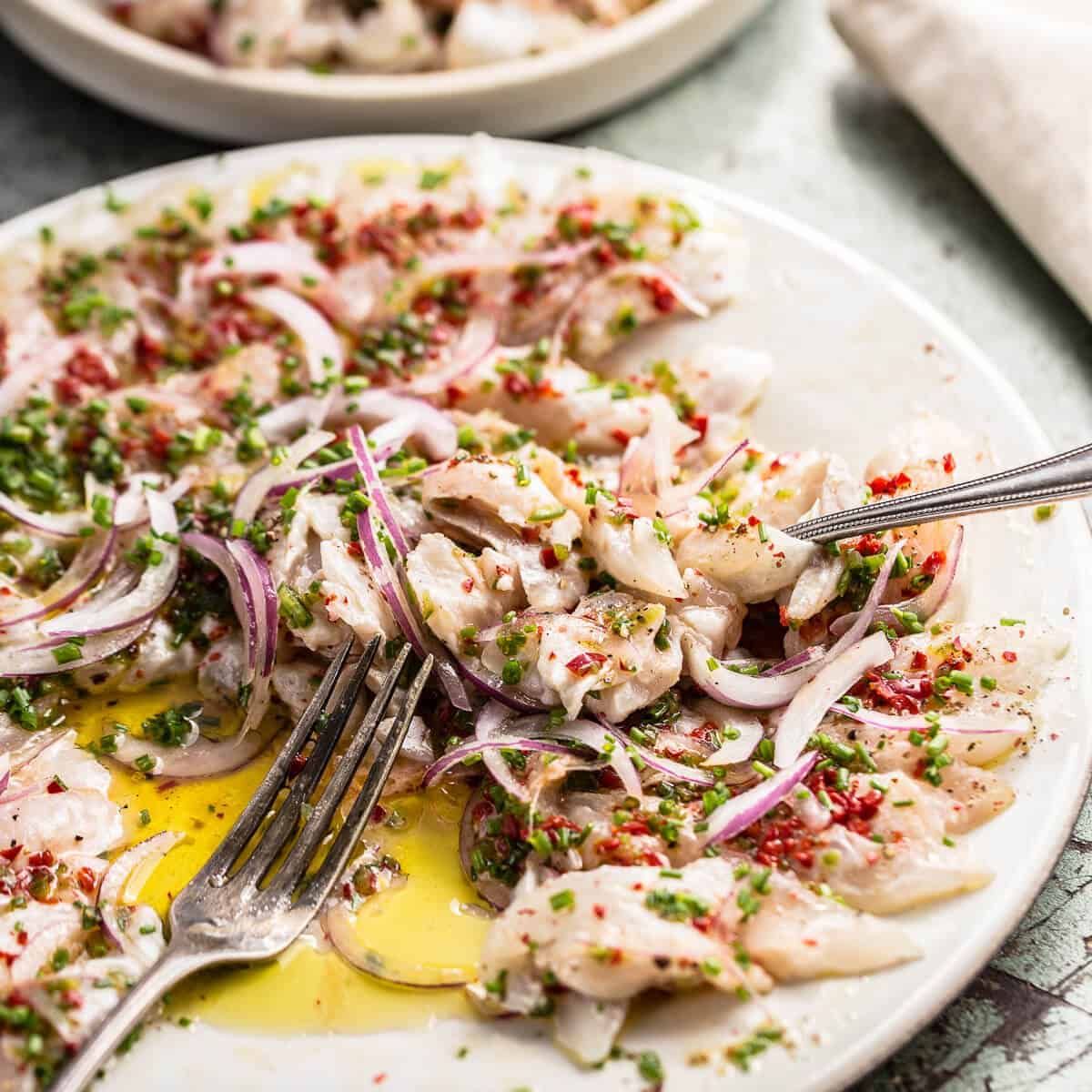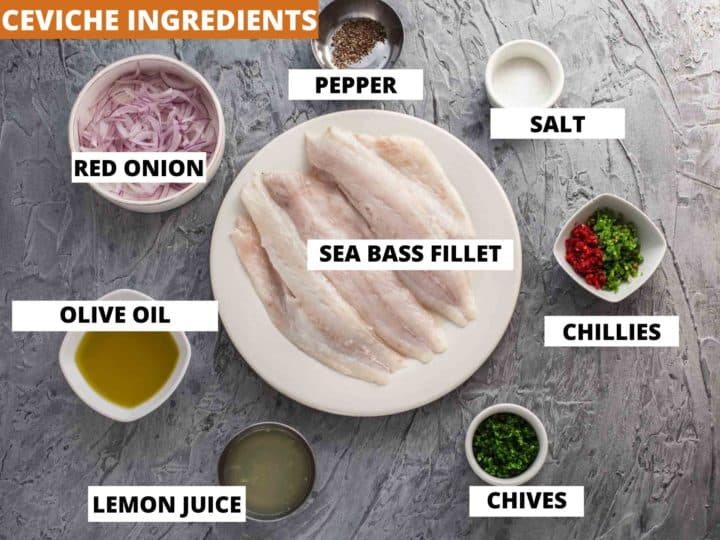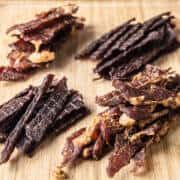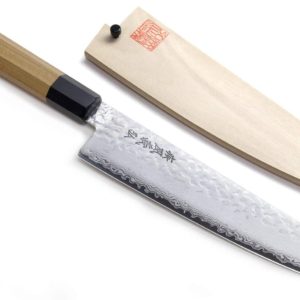Crudo, ceviche, sashimi. They are all delicious. They are all different but Crudo has style and simplicity that combines the best from both sashimi and ceviche.

Jump to:
What is it?
The word crudo means "raw' in Italian.
Crudo falls right into the goldy locks range when it comes to ease of preparation and the flavour of the dish.
It's made from extremely fresh fish or sometimes shrimp.
Few ingredients are added to let the natural flavour of the fish shine through. Often only lightly salted with a bit of lemon juice and good quality extra virgin olive oil.
As we all know, Italians are blessed with amazing raw produce and their signature cooking style use few carefully chosen ingredients in order to let the main ingredient sing.
Crudo is a perfect example of this no-fuss, high quality yet simple cooking style, we all love about Italian cuisine.
What is sashimi and ceviche
Sashimi is purely impeccable quality fresh fish. Often served with only a touch of good soy sauce or shoyu as it's called in Japan.
If and when wasabi is served it is done so from freshly grated wasabi root and not mixed up into the shoyu but, rather sparingly dabbed onto the fish and then dipped into the shoyu.
Pickled ginger is only eaten as a palate cleanser between courses.
There, I've taught you how to properly eat sashimi and sushi.
Ceviche is a Peruvian dish that has its origins from, hello again, Japan.
It's also raw fish or seafood that is marinated in a citrus sauce called Leche de Tigre(tiger's milk). Actually, the tiger's milk only develops when it's marinating. The fish gives its own juice to the citrus and voila! Leche de Tigre.
Also delicious but, you lose the flavour of the fish with heavy use of garlic, onion, lime juice, chilli and cilantro.
So why is crudo better?
It uses the best from both sashimi and ceviche. Super fresh high-quality fish with a few added ingredients used sparingly in order to complement the fish.
Useful equipment for this recipe
Ingredients needed

You want to get the freshest fish for this recipe. It's the star of the show and a bad product will ruin the dish.
- Fish - I used Sea Bass but, you could use shrimps, Dorado, Halibut, Salmon or any other type of super fresh fish you can find or afford. Ask your fishmonger or the person at the store to fillet, skin and pin bone the fish fillets for you. That way you don't have to faf around with that.
- Olive oil - Use a mild extra virgin olive oil. You don't want it too bitter.
- Citrus - I used lemons but lime is also good.
- Seasoning - Natural sea salt and freshly cracked black pepper.
- Onion(optional) - Use a sweet red onion and soak in water for about 5 minutes.
- Herbs(optional) - I used chives as the flavour profile is similar to an onion. So it keeps the number of different flavours to a minimum.
- Chillies(optional) - Just for a little bit of heat. Not too much and Jalapeno is fine for this purpose.
Important note
Before you start preparing, make sure the fish is very well chilled.
It should be very cold already but, if it warmed up a bit during the trip back from the store, place it into the freezer for 10 minutes.
It's a good idea to also place the plate you want to serve it on in the fridge beforehand.
Why does everything have to be cold? It simply tastes better when well chilled and the fish will stay fresher for longer.
Instructions

- Slice the fish fillets thinly across the grain and at a 45-degree angle. About 2-3 mm thick is nice. If you bought shrimps cut them in half length-ways making sure to remove the digestive tract along the spine.
- Sprinkle the salt all over the fish making sure you get it nice and evenly spread.
- Add the lemon juice, also making sure it goes into all the nooks and crannies. This is to ensure the fish gets seasoned evenly.
- If you are using chillies this is a good time to smear them gently onto the fish. Get them nicely spread out. If you're not using chillies then skip to the next step.
- Add a good helping of extra virgin olive oil. Spread it evenly over the fish.
- Finally, add the sliced onions and chopped chives. If you decided not to use any of the optional ingredients then you just finish with olive oil and enjoy with a well-chilled glass of Chardonnay.
Serving suggestions
Crudo is best served simple. I personally like having it with a bit of good toasted sourdough bread. Every bite is like a little snack on its own and you can mop up the olive oil and juices left on the plate.
You could also have it for a light lunch or serve it as an appetiser before something more substantial.
Like the following:
- At a BBQ before this crispy pork belly or grilled angelfish.
- Alongside these sexy roasted Romano peppers and pea & mint dip on a table full of antipasti.
- Make it an Italian night by serving with this simple burst tomato pasta.
- Perfectly Keto diet-friendly and healthy served with steamed spinach, broccoli or bok choy.
Frequently asked questions
I suggest you eat crudo, sashimi or ceviche straight away. Only because it's the best way to enjoy it.
Otherwise, you could store it in the fridge for up to 3 days and in the freezer for up to 3 months. Just take note that things like herbs and onions should be removed when freezing.
It depends on the crowd but I can eat it all recipe by myself. It's that good). Aim for 150g - 200g per person as an appetiser or as part of a feasting table or antipasti type setup.
If it's the main course and only dish then double or triple depending on your appetite.
As far as eating protein goes this is probably one of the best ways to get a healthy amount while also getting in healthy fats. Fish protein is also much easier digested than meat, which makes it a nice light dish.
Make sure you buy the freshest fish, store it correctly by keeping it well chilled and prepare it well as instructed in this recipe.
When buying fish make sure the gills are bright red and not slimy, the eyes are clear and not dull, plus the flesh should be firm and the smell should not be fishy.
Related recipes
Recipe
Sea Bass Crudo
Ingredients
- 300 g (⅔ lb) sea bass fillets - cleaned pin boned and skinned
- 30 g (2 tablespoon) olive oil - extra virgin
- 20 g (1 ⅓ tablespoon) lemon juice
- 2 g (⅓ teaspoon) salt
- 1 g (½ teaspoon) black pepper
- 20 g (2 tablespoon) red onion - finely sliced
- 30 g (2 tablespoon) red and green chilli - finely chopped
- 8 g (2 ⅔ tablespoon) chives - chopped
Instructions
- Slice the fish fillets thinly. About 2-3 mm thick is nice. If you bought shrimps cut them in half length-ways making sure to remove the digestive tract along the spine.
- Sprinkle the salt all over the fish making sure you get it nice and evenly spread.
- Add the lemon juice, also making sure it goes into all the nooks and crannies. This is to ensure the fish gets seasoned evenly.
- If you are using chillies this is a good time to smear them gently onto the fish. Get them nicely spread out. If you're not using chillies then skip to the next step.
- Add a good helping of extra virgin olive oil. Spread it evenly over the fish.
- Finally, add the sliced onions and chopped chives. If you decided not to use any of the optional ingredients then you just finish with olive oil and enjoy with a well-chilled glass of Chardonnay.
Notes
- Make sure the fish and the plate you serve it on is well chilled. Place both into the freezer for 10 minutes on a hot day.
- When buying fish make sure the gills are bright red and not slimy, the eyes are clear and not dull, plus the flesh should be firm and the smell should not be fishy.
- Ask your fishmonger or the person at the store to fillet, skin and pin bone the fish fillets for you. That way you don't have to faf around with that.
- Can be stored in the fridge for 2 days or frozen, but it's best eaten straight away.




















Comments
No Comments